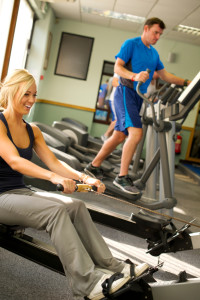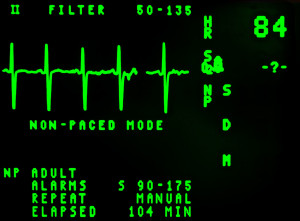Are you at the stage where you want to make some real changes to your life?
Well regardless of your age, gender and current level of fitness, a good cardio fitness program will add life to your years and many more years to your life – so let’s get moving and I will show you how to achieve a new you.

Aerobic or cardio exercise (plus some added strength training) has multiple benefits for people from all walks of life. Current scientific evidence indicates it can greatly increase your prospects of a long and fruitful life by avoiding and/or reversing many serious health risks like obesity, arthritis, diabetes, osteoporosis, cardiovascular and other chronic lifestyle diseases.
Doing some regular exercise will also improve your longevity, mood and outlook on life, sleep and metabolism and your creativity all because you are staying active.
What else do you need to convince yourself to start an exercise program right now?
And just for good measure as little as 30 minutes of cardio per day can also significantly reduce the risk of developing Alzheimer’s disease.
Unfortunately, many of us skip this highly beneficial daily routine, either because we are too busy and can’t fit it into our schedule or because we tend to continually procrastinate. I have put together the following tips which I hope will help you stay on track and turn your exercise routine into a daily (good) habit.
1. When starting out, get to know your limits
One of the reasons people can’t stick with a cardio exercise program for any length of time is because they exaggerate (in their own mind) the extent of their own strength and fitness levels. So what this means is that if you choose something which is too hard for you, you’ll not only suffer from burnout but may also put your health or even your life in danger.
This is why you should always talk to your doctor about your plan of taking on a cardio program for a few sessions a week and decide together what level of difficulty is the most appropriate for you to start out with.
If you suffer from any chronic conditions such as diabetes, cardio-vascular disease, asthma, lupus or back and knee pain, you should definitely seek a medical opinion prior to attempting any cardio workouts. You may also need permanent monitoring, because such conditions are quite severe and may be lethal in certain circumstances.
2. Baby Boomers should take additional cautionary measures
An older body is definitely not like a young one (worse luck), so you should never push it too hard when you are in this age category.
So don’t be at all embarrassed to choose a lighter cardio routine that provides you with just the right amount of exercise without putting too much stress on your body and its parts. Besides, the older we get, the more we tend to develop chronic medical conditions that may not allow us to work out as hard as we used to in our prime.
Even if your doctor approves your cardio routine always be on the lookout for any symptoms you may experience such as dizziness, chest discomfort or any kind of pain that doesn’t go away within a day or two. Should this happen to you then get yourself to your doctor straight away.
3. Take the ‘Talk Test’ for measuring your exercise intensity
The idea of Cardio exercise is to cause an increase of your heart rate, but without you losing your breath or feeling uncomfortable.
To determine whether your workout intensity is at the most appropriate level for you to get the maximum benefit, you need to find a way to measure it easily while on the go.
The Talk Test works like this; if you are able to sing or have a conversation while working out, you’re not doing it hard enough to be effective so up the tempo a bit (I don’t suggest you try the singing method though – but probably fine if you are doing cardio in the shower).
If, after the increase in tempo you then become breathless, you’re working too hard so ease off a little. The trick is to find the middle ground between these two extremes and you’ll know your workout is now in the zone and safe for your health. This test is very simple and at the same time very effective.
And besides, it doesn’t call for any special device or piece of equipment.
4. Measure your heart rate
The Talk Test is effective, but if you really want to have more control over the benefits you gain from your cardio workouts, you have to measure your heart rate a little more scientifically. Your aim should be, you want to work hard enough to effectively burn some calories and increase your fitness, but not so hard that you end up damaging your health.
 If you don’t have a heart rate monitor included in your workout equipment (a lot of equipment at the gym will have an inbuilt monitor), you can simply measure your heart rate by taking your pulse over 60 seconds. Actually you can measure it over 15 seconds, and then multiply by 4, if you think 60 seconds is too much.
If you don’t have a heart rate monitor included in your workout equipment (a lot of equipment at the gym will have an inbuilt monitor), you can simply measure your heart rate by taking your pulse over 60 seconds. Actually you can measure it over 15 seconds, and then multiply by 4, if you think 60 seconds is too much.
Measure your heart rate before exercising, when you’re at your peak of effort and then recovery heart rate when you finish. It is a good idea to keep a note of the numbers so you then have a record of how you are progressing.
The other option, which is the most reliable, is to buy yourself a heart rate monitor.
5. Warming up and cooling down are essential for an injury free workout
You absolutely MUST warm up properly before starting any cardio routine.
There are special exercises for warming up various muscle groups such as hamstrings, quads or calves so you need to become familiar with these. You need to take warming up very seriously if you want to avoid strains and sprains caused by forcing your muscles beyond their elasticity limit.
At the end of your cardio workout you should perform a cooling down which consists of a series of stretch movements, aimed at cooling down your main groups of large muscles.
If you skip the cooling down routine, you’ll develop sore muscles which will end up being very annoying and could well hamper your progress. This soreness may last for up to a week in some cases, so make it a habit to cool down properly for about 10-15 minutes after each workout session.
The cooling down has to be done immediately after the cardio session. If you wait too long, it won’t be effective as the muscles will have already cooled down by themselves.
6. Choose a range of cardio exercises you enjoy doing
If you hate running, then there’s not much point in trying to develop a habit of running several times a week. It won’t last long.

It’s much better to find a sport or activity you find pleasure in doing.
For instance, if you enjoy swimming, choose it over running. If, for some reason you still believe running is more effective, but you can’t see the fun of it, then maybe you could practice a sport like touch football or go jogging where the scenery is worth looking at. Take your iPod too. When I used to do a lot of running I had four or five different courses I used and this broke the boredom as I felt I was seeing something new all the time.
Table tennis can also be a great option of regular cardio routine. It has the advantage that you can dose your effort according to your level of fitness and age, so it is a very good sport for senior people as well. Lots of fun too.
Of course there is kayaking, cycling, ocean swimming (one of my favourites) or even power walking which can give you a tremendous workout.
If you get bored easily, you could put together a routine of various gym workouts, so that you don’t do the same activity for more than 15-20 minutes. Be creative with your cardio workouts and you’ll end up by loving them.
The only thing I have found that stands in the way of a good workout is a good excuse.
Continue reading – Part 2 is HERE.
[…] Continued from Part 1: […]